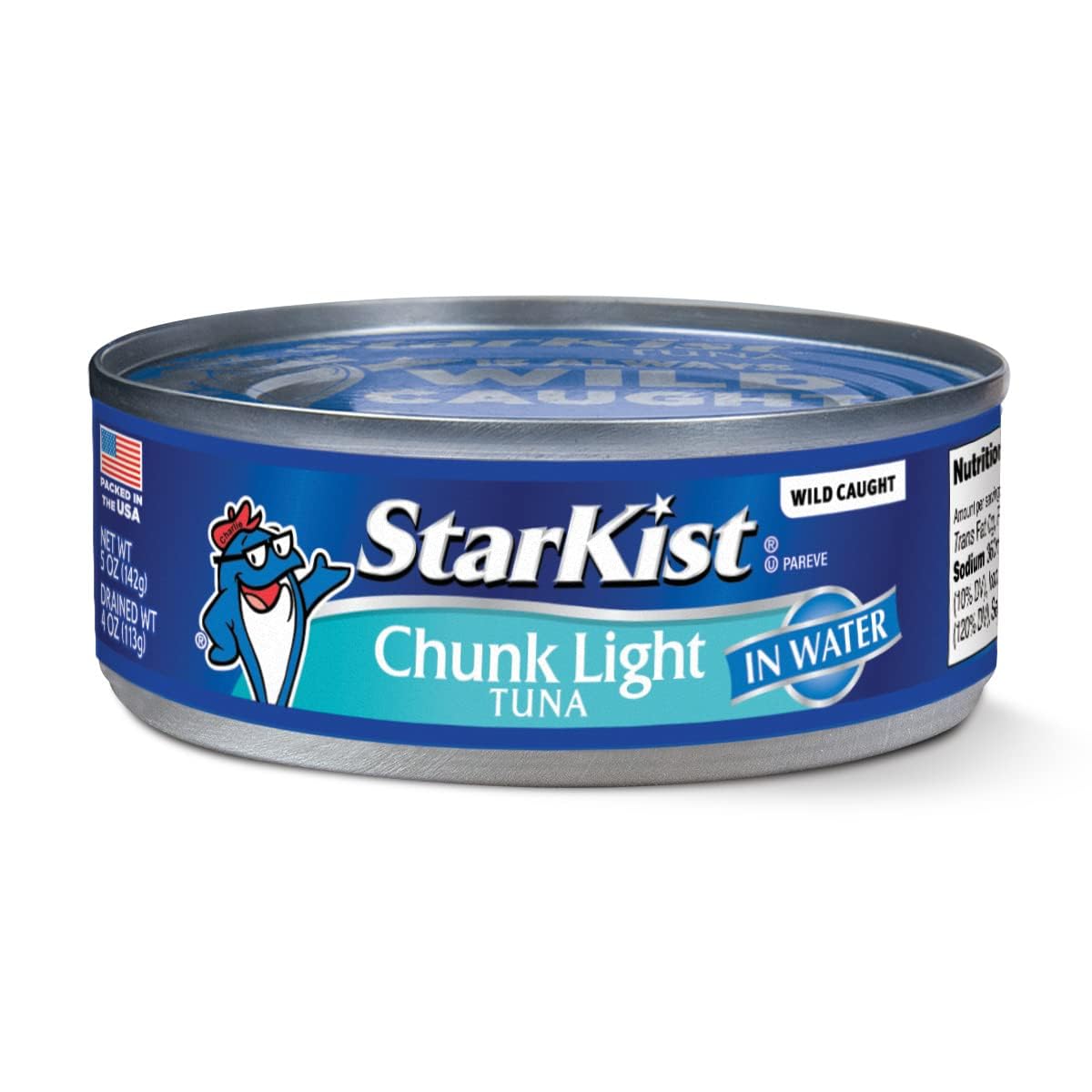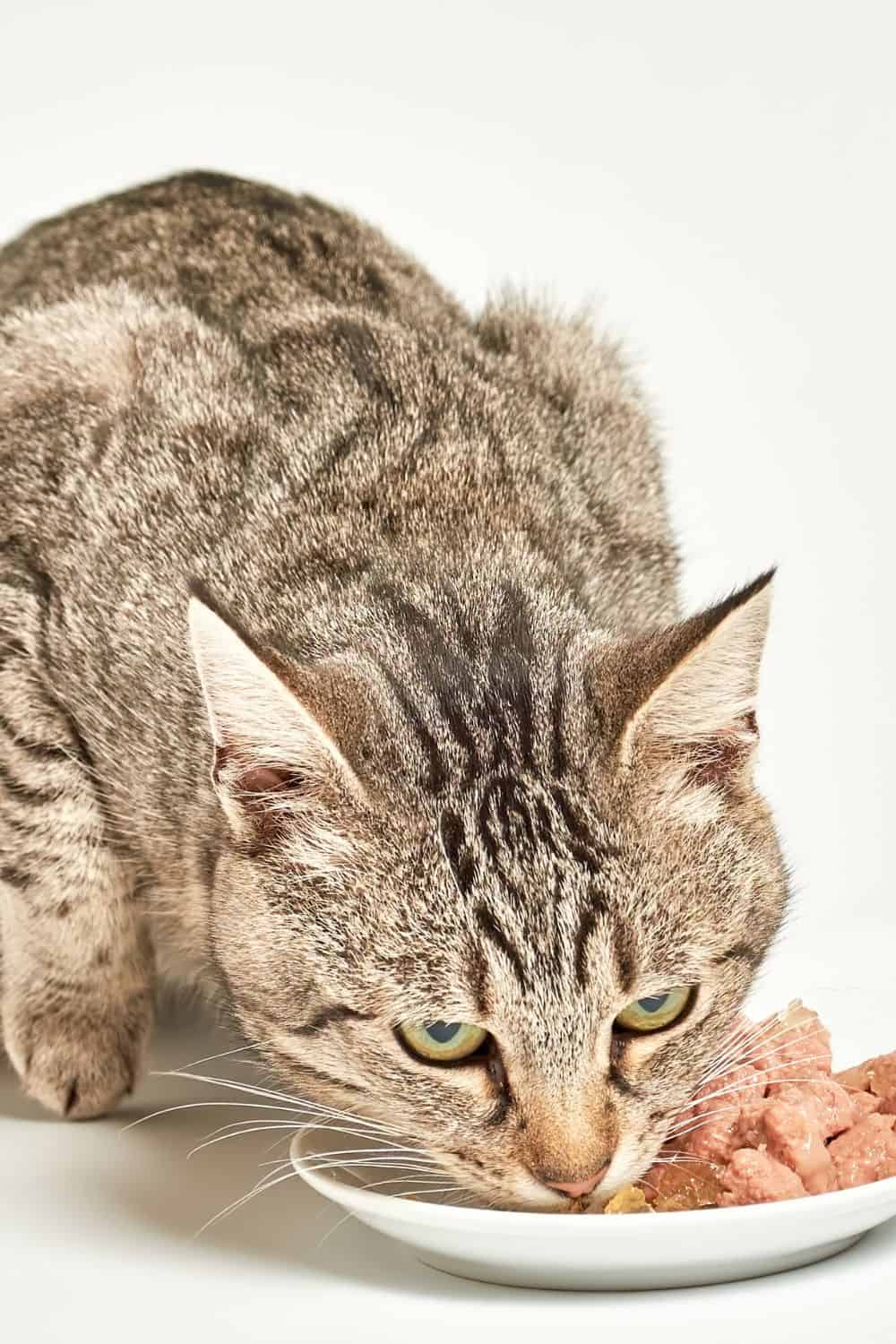A cat’s diet should be rich in protein. Tuna is one of the meals that make good sources of protein. Also, the great thing about it is that most cats are really fond of tuna. They’re just crazy about its powerful smell and its specific fish taste.
Tuna is considered safe for cats to eat, but isn’t recommended to be a regular part of their diet. It’s salty and has a high level of mercury.
Although tuna in moderation isn’t likely to harm your kitty, it’s still necessary to pay attention to the kind of tuna you give to it.
For instance, you may have Starkist tuna in your kitchen. This manufacturer has been operating for more than a hundred years and produces high-quality and affordable tuna.
Although this is a quality food, we still need to get some clear answers on its effect on a cat’s well-being.
Can cats eat Starkist tuna? Or should you better avoid sharing this tasty meal with your feline friend?
Let’s find out!
Should You Give The Starkist Tuna To Your Cat?

- Delicious
- 16+ grams of protein per serving
- Wild caught tuna and salmon
- Gluten-free
Starkist tuna is a product easy to purchase, since it’s available in grocery stores, as well as online retailers like Amazon.
I’ve encountered the following situation numerous times: I open a fresh can of tuna, and my kitty comes over, sniffing and begging me to share this delicious fish with it. In the eyes of your cat, canned tuna looks like the perfect treat.
So, should you let your cat enjoy Starkist tuna? This isn’t a simple question to answer. First of all, if you plan to give this tuna to your cat, you should choose the one packed in water. This is a far better choice than one packed in oil.
Although Starkist tuna isn’t toxic for cats, it shouldn’t be a part of their regular diet, either.
The best would be to keep it as an occasional treat for your kitty, especially if it seems to like it very much. In this case, your cat will adore you for cheering it up with this fishy treat!
Therefore, small amounts of Starkist tuna, occasionally, are considered to be acceptable. Just remember that moderation is key here and don’t leave this tuna in places reachable to your kitty.
These are some general recommendations. I would still suggest you consult your veterinarian on any news and additions to your cat’s diet. Now, let’s see what are the potential threats of this product for felines.
👉 Related Reading: Can Cats Drink Tuna Water?
5 Potential Dangers Of Starkist Tuna For Cats

The truth is that tuna is a great source of proteins and omega-3 fatty acids. It’s also low in carbohydrates and most cats will simply be thrilled when they just smell tuna near them.
However, Starkist tuna is, in the end, a product made for humans. Our needs and our digestive systems are completely different from cats’.
So, there are a couple of things to bear in mind when giving your cat a Starkist tuna.
1. Mercury Levels
Compared to other types of fish, tuna typically has higher levels of mercury. As Daily Paws explains, this is a toxic metal that can cause poisoning in both humans and animals if they eat too much tuna over a long period of time.
Starkist uses chunk light tuna, which has lower mercury levels compared to other types of tuna available on the market. However, it still isn’t mercury-free, meaning that there’s still a chance of mercury poisoning if you feed your cat this tuna regularly.
Some of the main indicators of this poisoning are seizures, loss of coordination, and vision loss.
It’s not very likely that anybody will feed their cat with tuna exclusively, meaning that chances of mercury poisoning are pretty low.
However, it’s still important for all of you to be aware of the potential consequences of feeding your cat Starkist tuna on a regular basis.
2. Salt Levels

Salt can not only make cats sick, but can be poisonous for them, too. A 5-ounce can of Starkist tuna contains 360 mg of sodium.
According to Oakhurst Veterinary Hospital, since cats require a lot less sodium than humans, it's crucial to monitor the sodium content in their food.
The general rule is that the accepted amount of sodium for an adult cat is around 200 mg/kg of body weight per day.
Any human food is a potential hazard for your feline friend, since most of us typically enjoy salty meals.
A cat that eats food too rich in sodium can experience symptoms such as lethargy, vomiting, and diarrhea. This is another compelling reason why you shouldn't regularly feed Starkist tuna to your cat.
3. Weight Gain
Many cat parents deal with overweight pets nowadays. Why do cats get fat? Well, there are two main reasons: Overeating and lack of exercise.
Although tuna isn’t typically a meal that will make us put some extra weight on, this is just too many calories for our small pets.
Simply, tuna made for humans, as the Starkist tuna, isn’t a meal with high nutritional value for our cats.
In the long term, regular consumption of this food can make your cat obese.
Obesity can lead to significant health problems like diabetes, arthritis, and cardiovascular disease.
Therefore, you should make sure your cat’s diet is based on meat protein, not human food of any kind.
4. Allergic Reaction

There’s also a chance that some cats won’t handle Starkist tuna well.
Moreover, it’s possible that your cat will have a food intolerance or even an allergic reaction after consuming this tuna.
Foods like fish, eggs, and dairy products are some of the most common food allergens among felines.
Some of the most common symptoms in this situation are gastrointestinal distress, itchy skin, hair loss, and skin lesions.
5. Tuna Addiction
This one may sound strange, but many cats will like tuna so much that they will even refuse to eat other food.
This is why it’s not good to feed your cat with Starkist tuna often. This meal appears to be exceptionally enticing to felines, to the point where they may want it exclusively.
Starkist tuna is a meal prepared for humans that doesn’t offer a well-balanced diet for cats. Think of it as a sort of junk food for us.
We wouldn’t mind having a tasty burger and french fries quite often, but, we’re also aware this food doesn’t have nutritional value for us.
If you don’t give your cat this tuna too often, it won’t get used to it and will find it as a tasty treat. On the other hand, if you exaggerate the amount of tuna, your kitty may start hoping to get it all the time.
👉 Related Reading: 7 Best Dry Cat Foods For Adult Felines
Final Thoughts

Can cats eat Starkist tuna?
If your pet could talk, I’m sure the answer would be to just feed it with this tasty meal all day long! Starkist tuna is a high-quality product, but it's made for humans, and not our furry companions.
There are some potential dangers of feeding your cat this tuna regularly. However, keeping it as an occasional treat isn’t likely to harm your cat.
Just bear in mind to only give it moderately, perhaps as a treat during a training session.
There isn't anything wrong with this tuna, it just doesn't have enough nutritional value to act as a regular, separate meal for your cat.
These are just some general thoughts on the Starkist tuna for cats. For any additional concerns and questions, I suggest you have a chat with your veterinarian.





